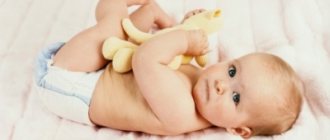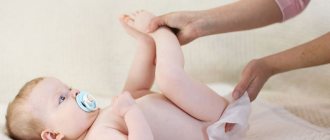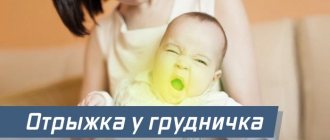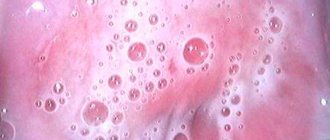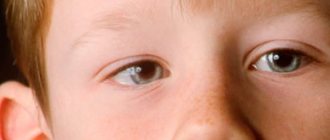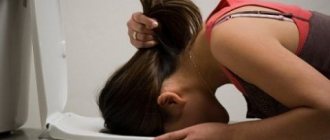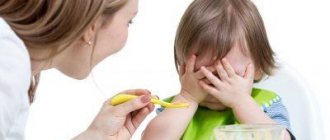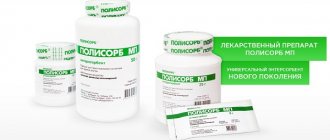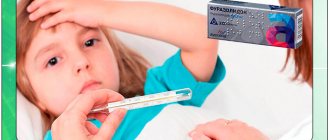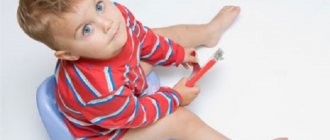Causes of diarrhea
Diarrhea in a 1 year old child is a common problem that many young parents face. Liquid stools can be released 3 times during the day. There are external and internal causes of frequent bowel movements:
- incorrect introduction of complementary foods: early consumption of adult foods, overeating;
- violation of the diet of a mother who is breastfeeding her baby;
- incorrect choice of artificial mixture;
- dysbiosis after a course of potent drugs as the main medications for the treatment of various diseases;
- poisoning with food, chemicals;
- ingress of E. coli, salmonella;
- diseases of the gastrointestinal tract, kidneys, liver, pancreas;
- internal inflammatory processes;
- allergic reaction to food;
- insufficient amount of secreted enzymes;
- period of eruption of baby teeth;
- emotional situations, changing climatic conditions.
The most common causes of loose stools in a 1-year-old child are eating poor-quality, stale food, eating with dirty hands, and pathologies of the digestive system.
Feces in children
Many mothers are interested in what baby’s stool should be like. It is worth paying special attention to this factor, since gastrointestinal diseases are especially severe at an early age. At the first suspicion, you should contact your pediatrician immediately.
In the first days after birth, meconium (dark color) comes out of the body. During the first three days, light-colored feces begin to mix in. On the 4-5th day, feces completely replace meconium. During breastfeeding, golden-yellow feces are a sign of the presence of bilirubin, paste-like, homogeneous, and acidic. At the 4th month, bilirubin is gradually replaced by stercobilin.
Typology of diarrhea
The nature of loose stool in a one-year-old child depends on the reasons that cause stomach upset:
- infectious;
- nutritional;
- dyspeptic;
- toxic;
- medicinal;
- neurogenic.
The infectious form is caused by the entry into the child’s body of pathogenic bacteria, viruses, and harmful microorganisms that contribute to the occurrence of intestinal flu, rotavirus, and salmonellosis. Manifestations in the form of loose stools, vomiting, and fever begin several days after the suspected infection. The duration of infectious diarrhea is at least 7 days. The age category of children at risk is children under 2 years old. Weak intestinal walls are most vulnerable to gastrointestinal infections.
The alimentary form is caused by an improper diet, consumption of unbalanced, monotonous food, which contains insufficient amounts of beneficial vitamins, amino acids, nutrients, as well as an allergic reaction to certain ingredients.
The dyspeptic form is most often found in diseases of the digestive system, pathologies of the liver, kidneys, and pancreas due to insufficiently strengthened organs and systems. The body of a one-year-old child is unable to properly digest the food consumed.
The toxic form is caused by kidney pathology, food or chemical poisoning - the ingestion of low-quality, stale products into the body, as well as harmful substances contained in household chemicals.
The medicinal form is associated with the use of potent drugs. The therapeutic course of drugs contributes to the occurrence of dysbacteriosis.
The neurogenic form is associated with experienced stress, fear, and nervous excitement. A child’s worries are often caused by moving, climate change, tense family situations, or changes in usual living conditions.
Types of analyzes
CODOGRAM. If the baby has problems with the tummy, the doctor prescribes a stool test - a coprogram. It helps you know how well food is being digested. There is no need to specially prepare your child for it, but before taking the test you should not give your baby enemas, put suppositories, give laxatives or iron supplements. The material collected in a special sterile container can be stored in a cool place for several hours if necessary.
FECAL TEST FOR OCCURRENT BLOOD. Its purpose is to detect bleeding of the mucous membrane of the esophagus, stomach or intestines. In some diseases, a small amount of blood, invisible to the eye, may be released. This analysis requires preliminary preparation. To prevent false-positive results, it is not recommended to brush your teeth two or three days in advance (instead, remove plaque from your child's teeth with a gauze pad or make sure he rinses his mouth). Also exclude meat, fish, eggs, tomatoes and green parts of plant foods from your baby’s diet.
BACTERIOLOGICAL STUDY OF FECA. If dysbacteriosis or an intestinal infection is suspected, the child is prescribed a stool culture for microflora. If possible, collection of material should be carried out before antibiotics are prescribed. If this is not possible, then no earlier than 12 hours after discontinuation of the drug. Feces for research are taken from different areas of excrement. If they contain pus, mucus, or flakes, they must be taken for analysis. The material must be delivered to the laboratory within 3 hours. Keep it cold all this time (for example, cover the container with ice cubes).
Symptomatic signs
The appearance of diarrhea in a small one-year-old child is often accompanied by additional symptoms:
- nausea;
- spasms, pain in the abdominal area;
- bloating, increased gas formation, flatulence;
- decreased appetite;
- sleep disturbance;
- weakness, lethargy;
- frequent crying;
- unpleasant sensations in the anus;
- increased body temperature;
- headaches, fevers.
With diarrhea, changes in the color, consistency, and shape of stool are observed, which indicate the peculiarities of internal processes. The nature of bowel movements is an important sign that you need to pay attention to. The absence of serious diseases is indicated by the release of the usual yellowish tint.
Light color indicates possible hepatitis infection. Severe diarrhea of a watery consistency occurs due to the penetration of E. coli, frequent overeating, and also due to lactose intolerance. Blood in the stool and green stools with a strong odor indicate the presence of bacteria in the body. Black stool is normal for an infant. But in one-year-old children, this is a sign of internal bleeding or prolonged use of medications. Foamy diarrhea without fever indicates dysbacteriosis and insufficient enzymes.
If a one-year-old child has diarrhea, this leads to dehydration. Symptoms are constant thirst, dry lips, pale skin, severe agitation or, conversely, passivity, rare urge to urinate, rapid breathing, increased heart rate. If additional signs are detected, you should consult a pediatrician.
Chair of a child in the second half of life
With the introduction of complementary foods, the baby's stool changes. The frequency of stool becomes less frequent - 1 - 2 times per day. The nature of feces will depend on the nutrition introduced. If a child’s stool is sparse and dense, it is better to start introducing complementary foods with fruit and vegetable purees. If the child, on the contrary, had liquefied stools, it is better to start with cereals.
For more information on how to properly introduce complementary foods into an infant’s diet, read the article by a pediatrician.
Find out more about when you need to introduce vegetable puree into a child's diet in the material from a pediatrician.
Since the baby is just beginning to learn to chew, fragments of undigested food may be visualized in the stool, and its color may match the color of the food eaten.
If, when adding a new product to the diet, in addition to changes in stool, the baby develops anxiety, bloating, or skin rashes, you should stop eating this food. Intolerance to this food product may be caused by an allergy.
If, when introducing semolina or millet porridge into a child’s diet, liquid, foamy, light-colored stool appears, or a loss of body weight is noted, you should immediately consult a doctor. This clinical picture is characteristic of celiac disease - gluten intolerance.
Diagnostic methods
Before treating diarrhea, you need to undergo diagnostic methods to determine the exact cause of the pathology. The first stage is taking laboratory tests of blood and urine for the presence of pathogens, infections, and dysbacteriosis. If loose stools are accompanied by nausea, then vomit is collected.
The next diagnostic stage is an instrumental examination: coloscopy, intestinal radiography, sigmoidoscopy, ultrasound of the abdominal organs. Studying the condition of the colon and digestive system will reveal possible cicatricial deformities that caused the inflammatory process, and as a result, the formation of diarrhea.
Detect saboteurs
“Uninvited residents” must be identified and driven away, otherwise they will poison and weaken the child’s body. Helminth eggs are detected in the laboratory, but this diagnosis is quite difficult. The fact is that they do not appear in the stool every day, so it is advisable to take tests at least 3 days in a row. In case of an increased risk of infection - contact with street animals, the habit of putting objects or fingers in the mouth, biting nails - it is recommended to undergo an examination, which, in addition to a three-time stool test, includes a blood test for antibodies to helminths. If you find worms or suspect an infection, do not self-medicate. The antihelminthic drugs you buy may turn out to be not only ineffective, but even toxic.
Features of therapy
Treatment of diarrhea, which occurs in a child aged 1 year, must begin with taking medications, diet, establishing a diet, and observing personal hygiene rules.
Drug therapy
In case of heavy bowel movements, which are observed more than 8 times during the day, vomiting, hyperthermia, severe pain, the presence of blood and mucus, it is not recommended to select medications on your own. Additional symptomatic signs and obvious manifestations of dehydration are reasons to contact a specialist. Depending on the causes of loose stools, you can give your baby:
- solutions to maintain electrolyte balance;
- sorbents;
- means for relieving fever, lowering temperature;
- painkillers;
- blocking agents;
- enzymes;
- antibiotics;
- probiotics;
- antihistamines.
The danger for the baby is the loss of a large amount of fluid due to frequent urges to go to the toilet. Therefore, the most important thing is to take medications to normalize the water-salt balance. Such medications include rehydration pharmaceutical solutions Regidron, Oralit, Glucosan. Sorbents Smecta, Enterosgel, Microsorb, which are suitable for use from the first month of life, help eliminate toxins and infectious bacteria. If additional symptoms occur in the form of hyperthermia and abdominal pain, it is necessary to give the child antipyretics or antispasmodics, for example, inserting rectal suppositories.
To eliminate the disturbing frequent urge, you can give medications to stop constant intestinal motility. But drugs such as Imodium and Bismuth are not recommended for young children. One of the causes of loose stools is an insufficient amount of enzymes during poisoning. In such cases, Festal, Pancreatin, Mezim-Forte will be effective remedies.
To treat intestinal and viral infections, you should take antibiotics, which can only be prescribed by a doctor. To avoid destruction of the microflora of the gastrointestinal tract after potent drugs, it is necessary to take probiotics that have an enveloping, protective effect. If the cause of diarrhea is an allergy to food, then you should take antihistamines, for example, Suprastin.
Diet
In addition to drug treatment, it is important to follow nutritional rules. A baby who is fed breast milk must eat according to a specific schedule. During this period, mother should give up foods that can cause allergies, for example, citrus fruits, fermented milk ingredients, fermentation, for example, grapes, peas, beans. Prohibited foods include fatty, spicy, smoked foods, processed foods, and fast food.
To avoid dehydration, your baby should be given clean water, herbal infusions, fresh berry compotes, and fruit drinks more often. The amount of liquid consumed is determined depending on the baby’s well-being: if the child regurgitates all the water, then it is worth reducing the volume. It is advisable to give water after each trip to the toilet or vomiting.
Lack of appetite is a normal condition, so you should not force your baby to eat baby food or other types of foods. If you experience food cravings, you should stick to a balanced diet:
- light broths with the addition of rice and barley;
- crackers;
- lean varieties of meat, fish;
- porridge;
- applesauce, banana puree;
- jelly, compote
To cure the disease, you need to drink a lot, eat easily digestible foods that do not cause intestinal irritation.
Personal hygiene rules
Frequent bowel movements can irritate the skin around the anus. To avoid redness and itching after each bowel movement, the anus should be wiped with wet wipes, washed with baby soap, smeared with protective cream, and used dry powder or talcum powder.
Adults and children need to wash their hands regularly before each meal and after each trip to the toilet. A mandatory rule of hygiene is to constantly change underwear, which must be washed with baby powder separately from other things, and then ironed with a steamer.
It is necessary to regularly ventilate the premises of the apartment, do wet cleaning using household disinfectants. It is mandatory to disinfect toys, bottles, and pacifiers with laundry soap, followed by rinsing with boiling water. It is recommended to avoid visiting crowded places.
Basic principles of treatment
I would like to draw your attention to the fact that treatment should only be prescribed by a doctor. Self-medication can lead to irreparable consequences or problems that will take a long time to eliminate. Treatment is based on following a diet and eating regimen, eliminating the causes that led to a delay in bowel emptying.
Diet
The first thing you need to do for any reason of constipation is to establish a diet and create the right diet for your child. Sometimes diet alone will be enough, but more often it is one of the measures taken. Children should receive all the necessary micro and macroelements; their diet should consist of an optimal ratio of proteins, fats and carbohydrates. Fiber should be present in the diet; it has a beneficial effect on the gastrointestinal tract.
What to include
- whole grain flour bread, bran;
- porridge (oatmeal, buckwheat, barley, spelled, couscous, bulgur);
- fresh vegetables and fruits;
- fermented milk products with low fat content (cottage cheese, kefir, fermented baked milk);
- lean meat, boiled or stewed;
- celery, parsley, dill, other greens;
- olive, vegetable oil;
What to exclude
- strong drinks (tea, cocoa);
- fatty foods;
- rice and semolina porridge;
- fresh white bread, pastry products;
- canned food, smoked meats, spicy dishes, sauces, if they were previously present in your baby’s diet;
- fatty broths (give preference to chicken breast when preparing soups);
- any snacks, fast food, carbonated and sweet drinks.
Other treatments
- Elimination of dysbacteriosis, abolition or replacement of medications that caused illness;
- More physical activity, walking and playing in the fresh air;
- Help your child psychologically cope with the problem, encourage him, surround him with attention, affection and care;
- Abdominal massage. Lay the child on his back, with light and smooth movements, without strong pressure, stroke the child with your palm on the stomach, making circular movements.
Laxatives
If the above measures do not lead to results, for children 2 years old you can use the following laxatives:
- laxative suppository;
- microenema;
- a drug based on lactulose.
Once the problem is resolved, make an effort to establish a bowel movement routine. It is important to learn to do this every day, at a certain time. Watch your baby's diet and don't go back to eating too many sweets. Follow the rules of healthy eating as a family.
Post Views: 1,307
Prevention methods
To avoid the development of serious complications or recurrence of diarrhea, it is important for parents to regularly follow preventive measures:
- From childhood, teach children to wash their hands after going outside, before eating, after visiting the toilet, or interacting with animals;
- give your child only fresh, high-quality, washed, thermally processed food;
- drink pure mineral or boiled water;
- choose the right complementary foods and artificial formula;
- follow the correct diet when breastfeeding;
- regularly disinfect pacifiers, bottles, toys;
- strengthen the immune system, harden the body;
- Do not expose children to stress or emotional turmoil.
Diarrhea in a one-year-old baby is a pathology that is a consequence of disorders of the digestive system. To treat the disease, the child must take medications for diarrhea as prescribed by a specialist, follow a diet and hygiene rules.
We recommend: How and what can you feed and water a child with diarrhea?
Diet food
Diet for mushy stools plays a decisive role. Sometimes, by changing your diet, you can quickly and permanently eliminate the problem. First of all, it is necessary to reduce the amount of plant food consumed, which accelerates peristalsis and forms liquid stool. It is necessary to include in the diet:
- bread;
- pasta;
- boiled rice;
- buckwheat;
- bananas;
- cookie;
- potato;
- persimmon.
Diet food - photo gallery
Bread anchors the chair
Pasta contains essential carbohydrates
Rice has a beneficial effect on the digestive tract
Buckwheat regulates intestinal function
Bananas contain a large amount of starch
It is better to cook cookies yourself or buy them without additives
Potatoes have a beneficial effect on the gastrointestinal tract
Persimmon has an astringent effect
